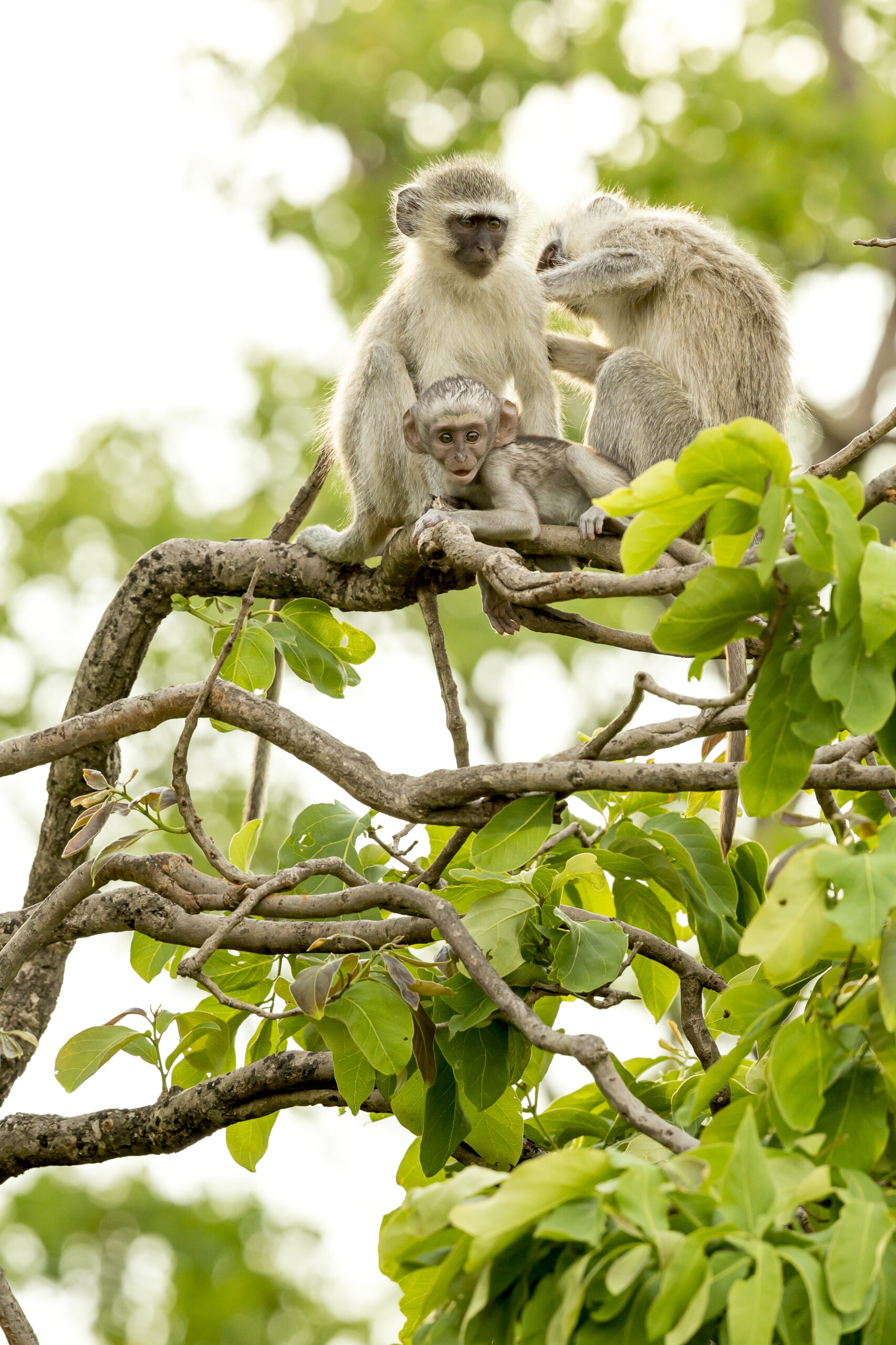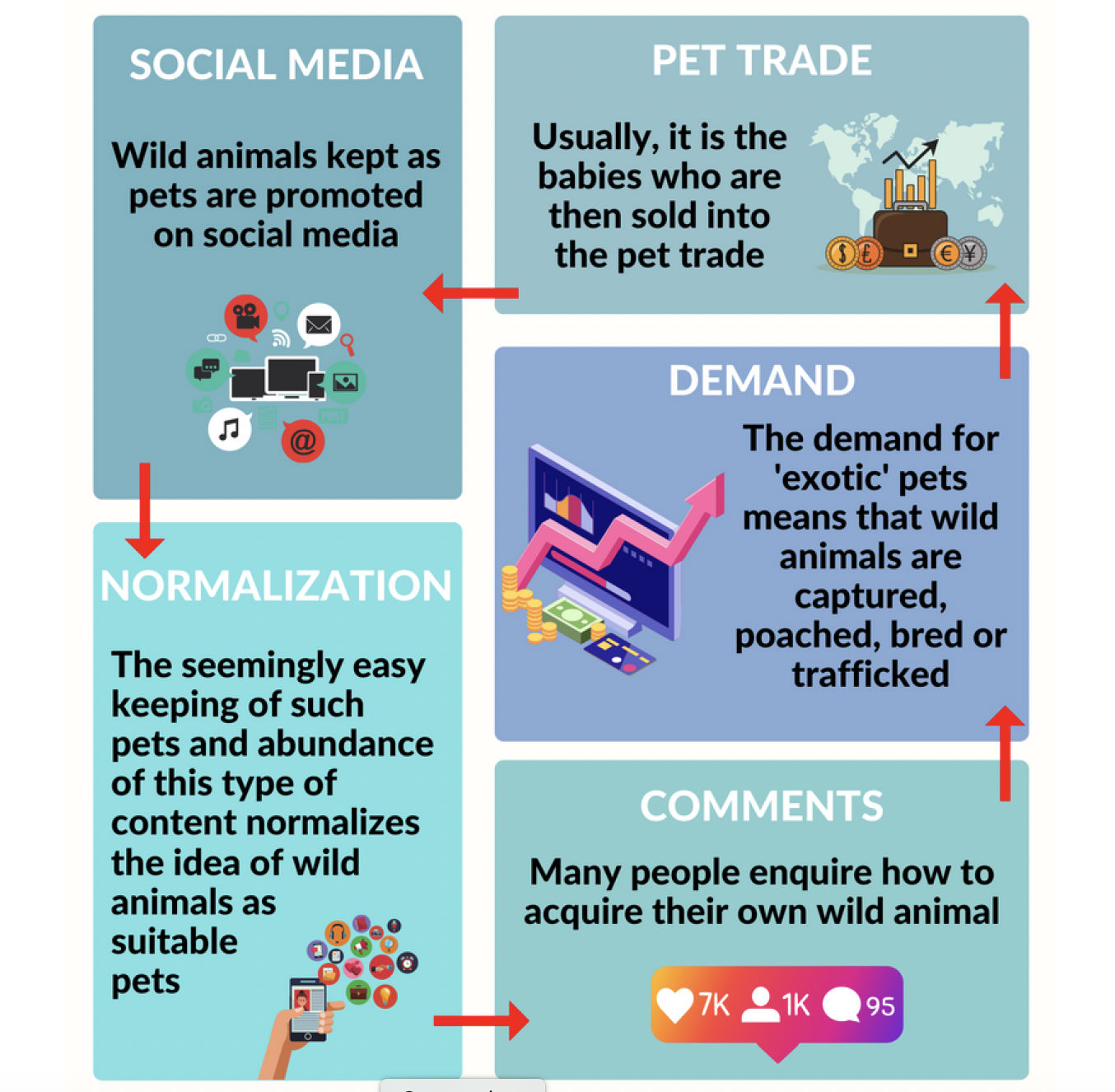Social Media & Wildlife Trafficking:
Breaking the vicious cycle of cruelty and suffering
A new report highlights the devastating impact of social media on primates and other wildlife.
By PASA Staff
Think social media is wildlife-friendly? A recent report from the Social Media Animal Cruelty Coalition(SMACC) documents a much different – and much worse – picture. In fact, social media enables wildlife trafficking and creates a cycle of suffering. But you can help end it. Read on to see how.
Key Findings
Over the course of a year, volunteers documented videos that featured wild animals in pet-like situations. However, these videos only scratch the surface of the issue – many more videos showing animals in unsafe situations are found each day. Key findings from the report include:
- The report reviewed 840 social media posts showing at least 97 different species
- Up to 65% of the animals depicted were endangered species such as long-tailed macaques and tigers, and some even critically endangered such as orangutans.
- Collectively, these 840 posts had been viewed 11,806,630,205
- Primates made up 76% of the posts. Wild felids (tigers and other wild cats) featured in 8%, and reptiles and amphibians in 2.6% of posts.
The animals in these posts, many victims of wildlife trafficking, were subjected to cruel and inhumane treatment. 13% showed animals being psychologically abused, 12% depicted them as human entertainers, and 8.8% showed them being physically abused.
The Vicious Cycle
These videos create a vicious cycle of harm. First, they normalize the concept of “owning” wildlife, fueling demand for more wild animals to be sold by wildlife traffickers in the illegal pet trade. Through commenting and direct messaging, people can easily find out how to acquire such animals themselves. Behind the scenes, animals are captured or bred in horrific conditions to meet this demand, posing serious danger to the welfare of the animals. When these animals are sold into the pet trade, they face lives filled with tremendous suffering. Often, pet owners will create social media accounts to show their new wild pet, perpetuating the cycle of cruelty.
Ending the Cycle of Cruelty
While there is debate on the extent that social media platforms can regulate their users, most major platforms have taken strong positions against other forms of cruelty and illegal content, like child abuse, hate speech, and discrimination. In these cases, content is removed, and relevant information shared with law enforcement authorities. The mechanisms are imperfect, but they demonstrate that such issues can be addressed. It is time that wildlife trafficking and animal cruelty is taken just as seriously and eradicated from these platforms.
Because this issue so greatly impacts primates, PASA is running a petition on the issue, demanding that Facebook and Google make it easier to report animal abuse, and take action to remove this content. So far over 205,000 compassionate, caring people have signed on. Please add your name or share it with your friends and family. Together we can make a difference for suffering animals.
As an individual, you can also do a lot to help end this cycle. Follow these steps to help eradicate wildlife trafficking and animal cruelty from online platforms.
- Be Aware: Sometimes animal cruelty is not obvious, especially when it comes to ambiguous content such as fake rescues, wild animals as pets or teasing. Such videos involve serious animal suffering behind the scenes.
- Report: Always report the video directly to the platforms and encourage others to do the same. If there is no option for ‘animal cruelty’, select the closest category which can be applied.
- Don’t watch this content. The more views the videos receive, the more the algorithms will show them to others, helping them grow in popularity – and potentially, profitability.
- Do not engage: Do not comment, like or dislike, on the video, even in outrage or to denounce cruelty. This may seem counterintuitive. However, engagement increases popularity. It is best not to add any reaction at all, and to report the video or channel immediately.
- Do not share. Do not share the content on your own page, even if you are doing so to raise awareness of the cruelty or illegality. Sharing increases popularity and again, potentially also increases profitability. Instead, report them, and raise your concerns by sharing with others the things to look out for – or direct people to the SMACC website, smaccoalition.com, where there is more information available.
The SMACC Coalition
PASA has been working in the Social Media Animal Cruelty Coalition for over two years to support this important work. PASA staff members Ruby Vise-Thakor and Lilija Rapa contributed to the report on wild pets. In addition to documenting online cruelty in reports, the coalition meets with social media companies to help them create and enforce effective policies to protect animals. The coalition also has a helpful form where you can report concerns about animal cruelty online.
The full report is available to view here (note that some content may be distressing – and there is an image-free version available).


